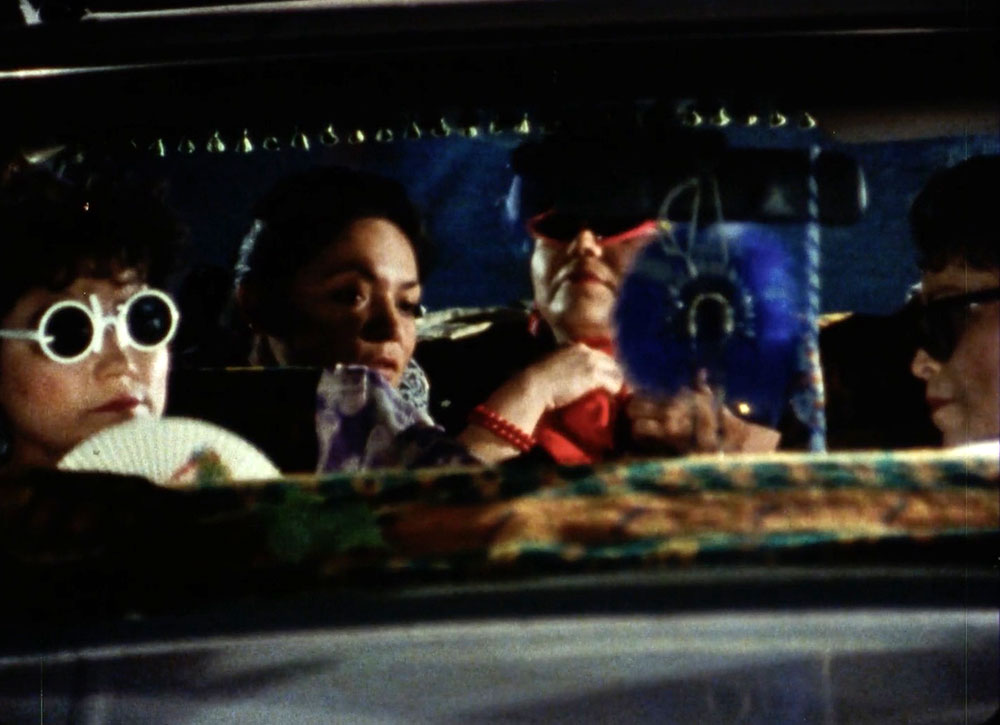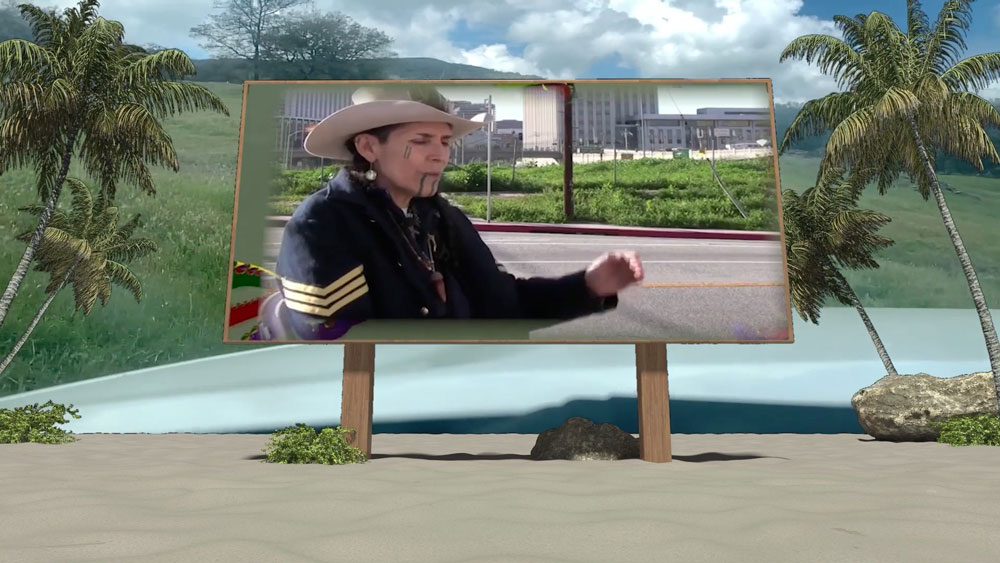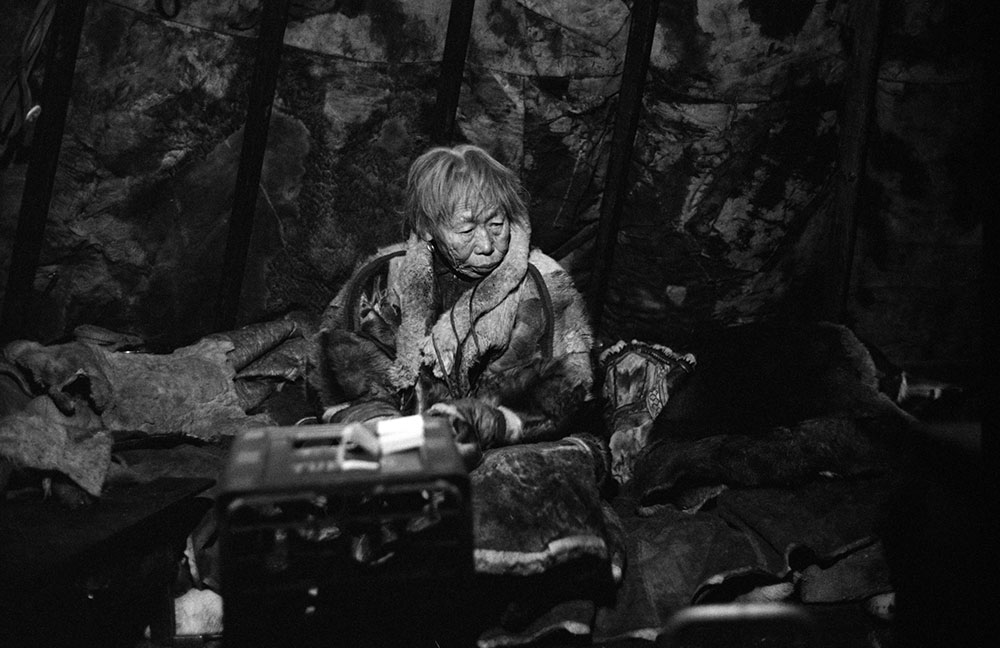As far as broad categorizations go, "Indigenous cinema" rivals "African cinema" in its uselessness. Both terms flatten their multilingual, multicultural, and multinational referents into a presupposed and singular identity.
The inadequacy of the term is on full display in the 60 diverse projects included in Media City Film Festival’s splendid Indigenous Edition of its online film program, ThousandSuns Cinema. The series includes the "ethnopoetic" works of MacArthur-recognized filmmaker Sky Hopinka (Ho-Chunk/Pechanga); the meditative, slow-burning documentaries of Miguel Hilari (Aymara); and the confrontational video works of Dana Claxton (Hunkpapa Lakota), among others. The inclusions often have as little in common regionally as they do stylistically, spanning from the silver-ore mountains of Bolivia to the dusty borderlands of the American Southwest and the hard, frozen flats of the Russian Far East.
Still, patterns and echoes do emerge. Many of the films in the series prominently feature music; a surprising number include dance interludes. A number of the projects meld the past with the present, either through collages, dreamlike dialogues, or out-of-time landscapes—though this is done toward different ends. Quite a few of the films involve seals, including delightful depictions in "Animation From Cape Dorset," a 1972 anthology of shorts made by Inuit artists for a workshop with the National Film Board of Canada, and Natsik Hunting (1975) by Mosha Michael, the first Inuk live-action director.
Though Native Americans have a long history on film, it's largely been one defined by stereotypes authored by non-Indigenous makers. Films made by Indigenous directors represent a much-neglected shelf of world cinema—Hopinka's Małni - Towards The Ocean, Towards The Shore (2020), included in the program, marks a significant recent breakthrough, having been picked up for distribution by Grasshopper Films and made available on Mubi. While most of the rest in the ThousandSuns collection are unsung rarities, the program is nevertheless surprisingly inviting; since so many of the films are shorts, jumping unsystematically from piece to piece is as good an approach as any.,
Among the standouts, though, is Kent Monkman's (Cree) Sisters & Brothers (2015) a blazing criticism of the residential school systems of Canada and the United States that likens the massacres and programmatic traumatization of Native children to the concerted annihilation of the bison. Through beautifully edited archival footage, Monkman makes a concise case that both were genocidal tools of the colonizing governments, analogizing the forced starvation of the continent's original inhabitants with the forced erasure of their cultures, languages, and futures.

Nedarma (Travelling) (2007), by filmmaking duo Anastasia Lapsui (Nenets) and Markku Lehmuskallio, is another must-watch. Shot on sparkling black-and-white 35mm (pictured at top, and making its world premiere virtually), the film follows a group of Nenets on their nomadic and spiritual journeys across the Russian Arctic, a land they believe exists balanced between heaven and hell. The documentary wanders from one slice of life to the next: the carving of sleds, the herding of reindeer, the play of children, work at fox-fur farms in the city, and the painstaking seasonal movement of the Nenets' homes (including hauling their tipis, babies, dogs, and even, remarkably, a cat).
Managa Bar/Rustam's Habitat (2017) by Svetlana Romanova (Sakha/Even) is also set in Russia's Far North, focusing on the restless youth of Yakutsk, one of the coldest cities in the world. Shot partially on a shaky handheld camera, it uses video-art techniques, like direct-to-camera recitations and intimate home footage-style conversations to create a portrait of life among the garbage-strewn Soviet apartment blocks. In interviews, Romanova has described her interest in "the creation or origin of a new autonomous visual Indigenous language," and Managa Bar/Rustam's Habitat, like many of the projects in the series, feels like a major achievement toward that goal.
Rhayne Vermette (Métis), the Winnipeg-based creator of the brief but wonderful Full of Fire (2013), has similarly positioned her filmmaking as challenging "colonial constructs," particularly in relation to her feature-length Ste. Anne (2021). Though only Vermette's shorts are included in the ThousandSuns spotlight, Full of Fire alone is a deeply impressive work. The hand-spliced 16mm found-footage collage builds an intense feeling of foreboding in its mere two-minute runtime. Though Vermette has cited fellow Winnipegger Guy Maddin as an influence, her work is clearly her own, with an underlying anger and feminist bent that makes it something wholly transformed and new.
Another experimental film in the program, It Starts With a Whisper (1993) by Shelley Niro (Mohawk) and Anna Gronau, is a highlight of the slate. Broadly a narrative about a Native American woman trying to find her place in modern society (while being tormented on a road trip to Niagara Falls by her loving "matriarchal clowns/aunts"), its dreamlike voiceover and strange turns—including one of those dance interludes—give it a propulsion that isn't traditionally "narrative" at all.

And though San Diego is less than 150 miles from Hollywood, Fox Maxy's (Ipay Kumeyaay/Payomkawichum) Maat (2020) could not be less interested in mainstream filmmaking. “I realized," they told Filmmaker in 2021, "I didn’t want to work in the white world at all." Taking a more in-your-face approach than Niro and Gronau do, Maxy explores the connection between modern Indigenous people and their occupied territories (in this case, southern California), making this, however loosely, a landscape film. But by blending found footage (including from YouTube and Ancient Aliens), video-game playthroughs (Grand Theft Auto, Second Life, and Sims), and original material (including phone videos), Maat feels as much like an activist film—with its challenge to viewers to consider what stolen land actually looks like and means—as a playful digital experiment.
What is most striking about ThousandSuns Cinema's Indigenous Edition, and also its greatest reward for viewers, is how uninterested filmmakers like Maxy are about working within the established conventions of non-Native filmmaking. There is a distinct sense across these 60 works of parallel searches for a new visual vocabulary, whether it be through experimental methods, the polyphony of collage film, the reclamation of archival footage, or the reconsideration of documentary methods and subjects. At the risk of falling into the aforementioned danger of making generalizations about "Indigenous cinema," a thesis for the series—or, at least, a helpful reminder for any baffled and curious non-Native viewers—is raised by the Tongva/Ajachmem activist-artist F. Frank Manriquez in a clip collected in Maat. "This is our place and we know how to talk to it," she says. "Even beyond that, we know how to listen to it."
ThousandSuns Cinema: Indigenous Edition is streaming for free through January 30.



